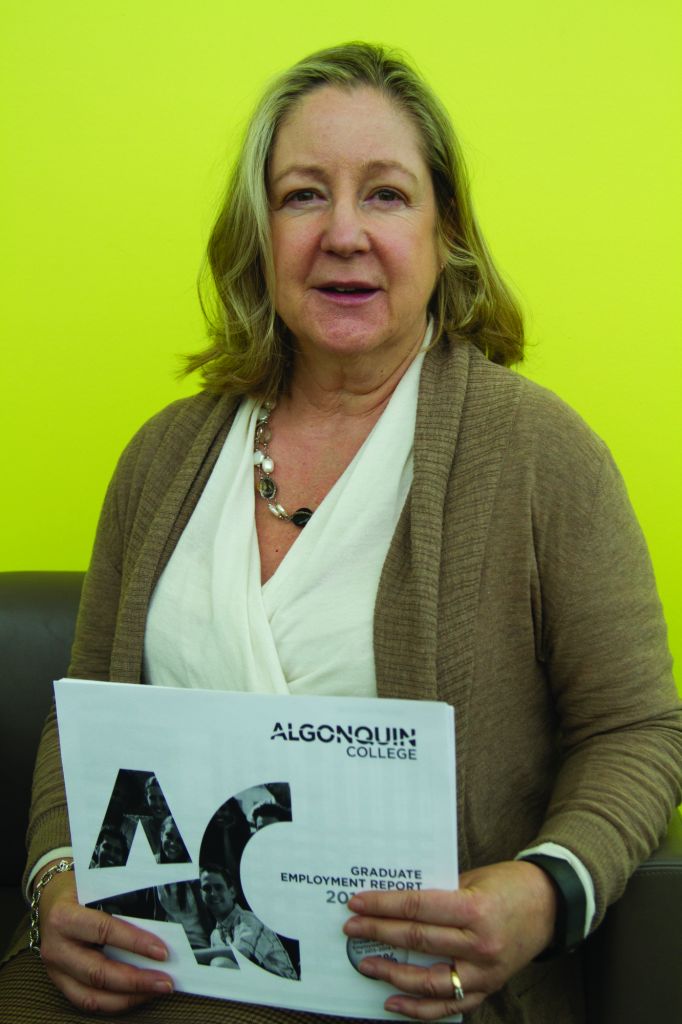Algonquin’s annual Graduate Employment Report (GER) indicates that many programs have a high employment rate while others are falling behind.
But for the latter category, it’s not the program’s fault.
“The world of work is changing” said Jennifer Jarvis, the acting manager of the Algonquin’s employment support centre. She says the report is only a snapshot of the full picture.
Some 6,563 students graduated in 2014-2015 but only 2,985 of them had their info included in the GER. Some choose to enter their careers later so they can further their education or travel, hindering the accuracy of the report.
Jarvis says some students find themselves in the wrong program because they didn’t do enough market research.
Jocelyn Ryerson, a massage therapy student, chose her program because it’s her passion, not because her program’s total employment percentage on the 2014-2015 GER was 100 per cent.
“It’s a bonus knowing that the thing I love can also lead to success,” said Ryerson.
However, some students realize that their intended career path doesn’t offer the opportunities they want and some programs lead to an industry that doesn’t have enough jobs to support the number of graduates.
For example, a program with one of the lowest total employment percentages on the GER was Performance Arts, coming in at 50 per cent. Courses that are less formal tend to score lower employment percentages.
Jarvis points to the labour market information (LMI) to give students a fully informed outlook into the job market for most careers. The LMI can show whether the jobs are affected by outsourcing or disrupted by new technologies.
Essentially, checking for employment opportunities and information for your field of study before enrollment can alter your program choice, and possibly save you time and money.


